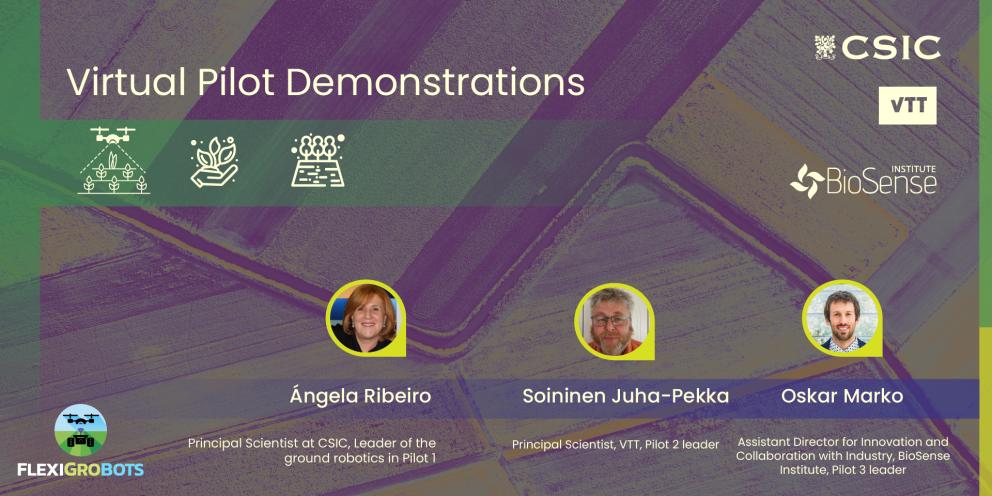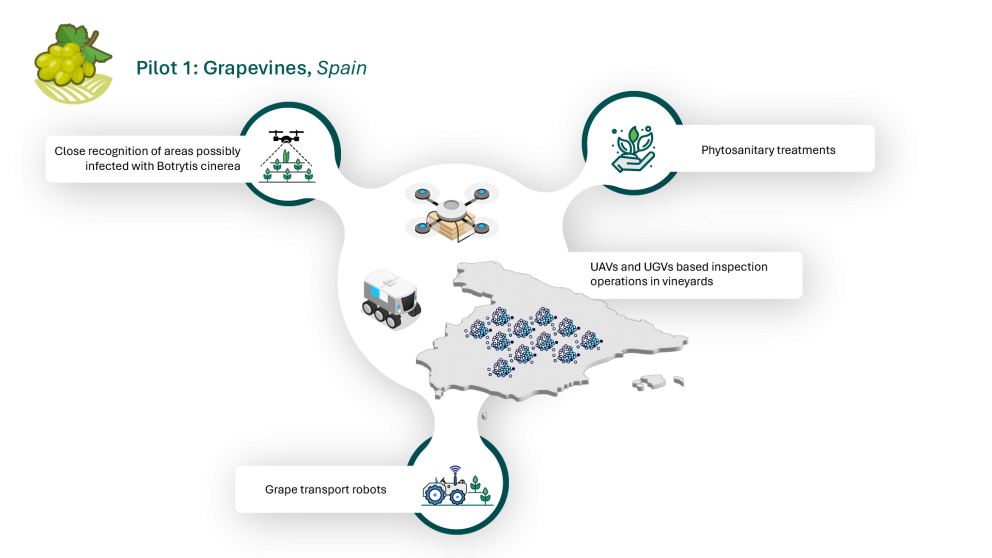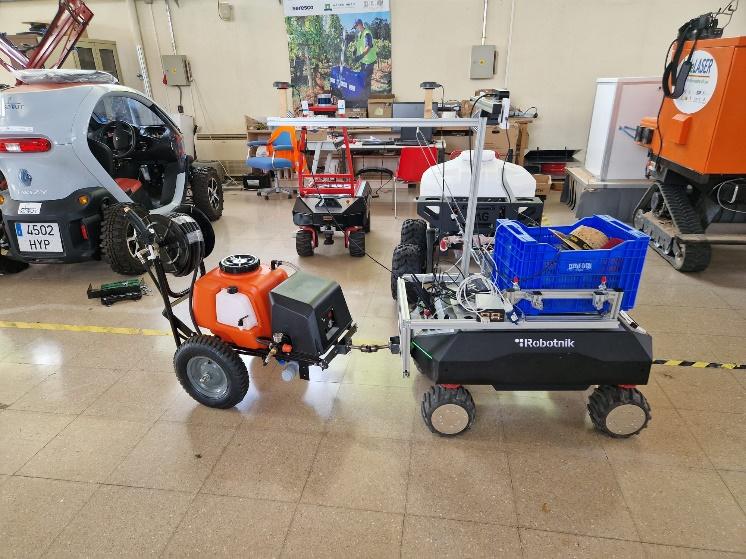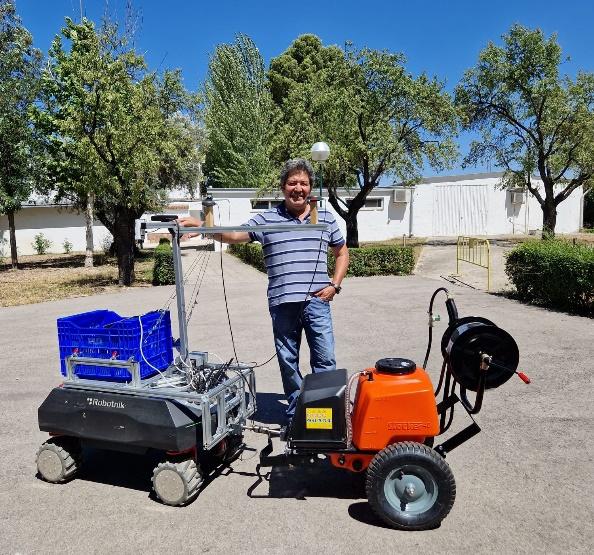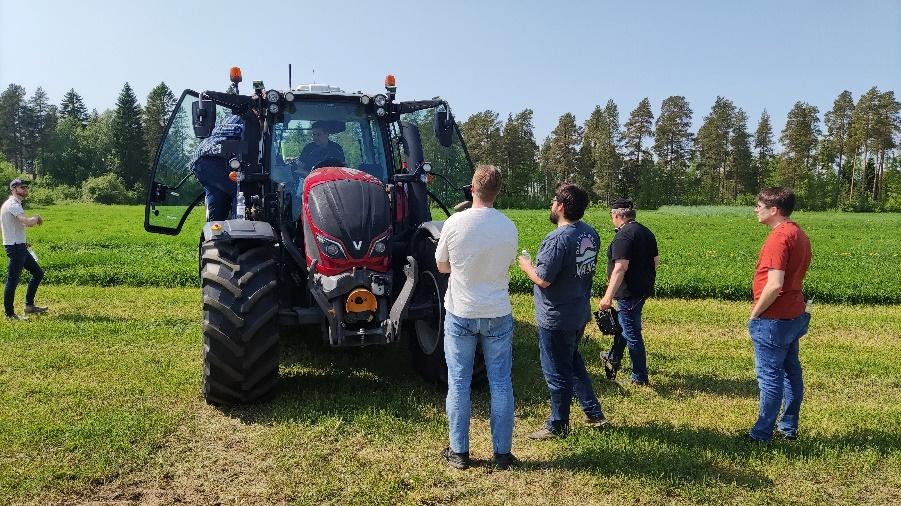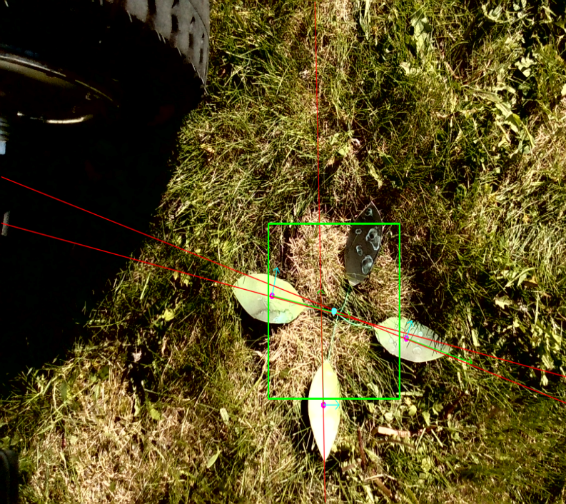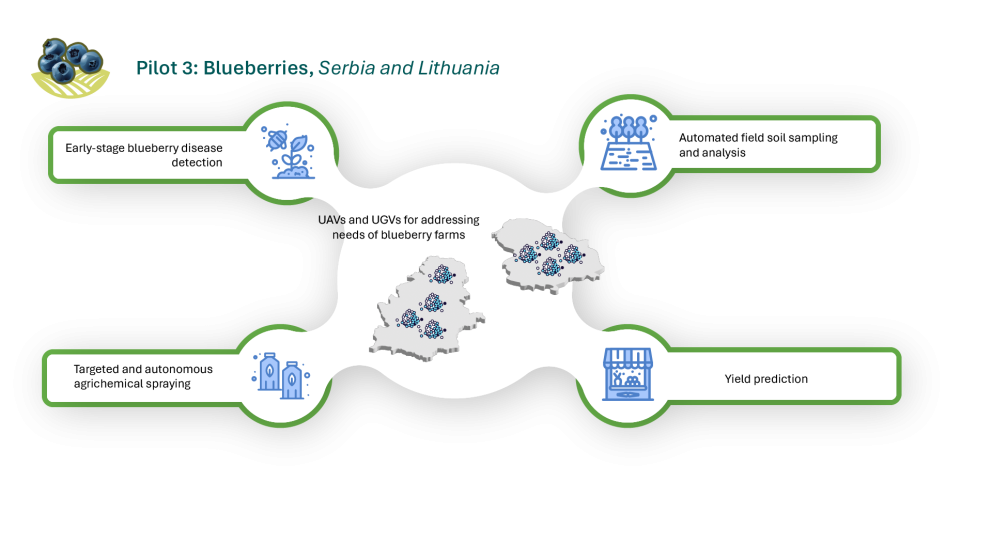FlexiGroBots project implementation is going according to plan and the technology developed within the project is being tested on the fields around Europe, from the Finnish grasslands to the vineyards of the Mediterranean. Many different pieces of technology, platform components and integrated systems have been developed and assembled within the previous two and a half years. Most of these will be published in scientific journals and conferences, but they must not remain enclosed within the scientific community. Our goal is to take them one step further to the farmers and introduce disruptive innovations to European agriculture. To achieve this, we must first make project results visible to a wider community of stakeholders.
The summer is a holiday period for pretty much everyone in Europe. However, it is a very busy period for our robots, who seem not to care that much about the heat in the open fields. We will use this period to fine-tune the control of the robotic fleets, their movement in the field, AI algorithms, and hardware components, and test their performance. These results will be presented in September to farmers, agro-businesses, innovation developers, industrial partners, and others, to show what we have been working on lately. As our solutions are globally scalable and fields are located in rural areas, in order to maximise the impact, we will conduct virtual pilot demonstrations.
Pilot 1: Grapevines, Spain
In the pilot of 1, carried out in vineyards, we will have two demonstration days, one in the first week of August and the other in the third week of September, the latter coinciding with the harvest period. In a few weeks, on the first demonstration day, we will show the collaborative behaviour of a heterogeneous set of robots to detect and treat Botrytis in grapes.
CSIC will deploy two inspection robots that will follow predefined routes with the help of information collected from the sky by a set of drones (WU). The aerial information tells us about the probability of Botrytis and allows us to adjust the behaviour of the inspection robots to the probability of Botrytis. The inspection robots will travel the assigned route taking images in which Botrytis will be detected with the support of the FlexiGroBots platform (ATOS).
The detection of Botrytis along the paths of the inspection robots will result in a treatment map that will be used by the treatment robots (CSIC) that will be deployed after the inspection robots. This collaborative procedure allows each robot to work at the speed required for the task at hand, but at the same time it is possible for the entire ground robotics fleet to be working simultaneously. Finally, as if it were an orchestra, there is an orchestra conductor (CSIC) who gives input to the different robots and supervises the work of the whole, as well as a visualisation and information system (SERESCO) so that the farmer (TERRAS) can know what is happening in his field at any given moment.
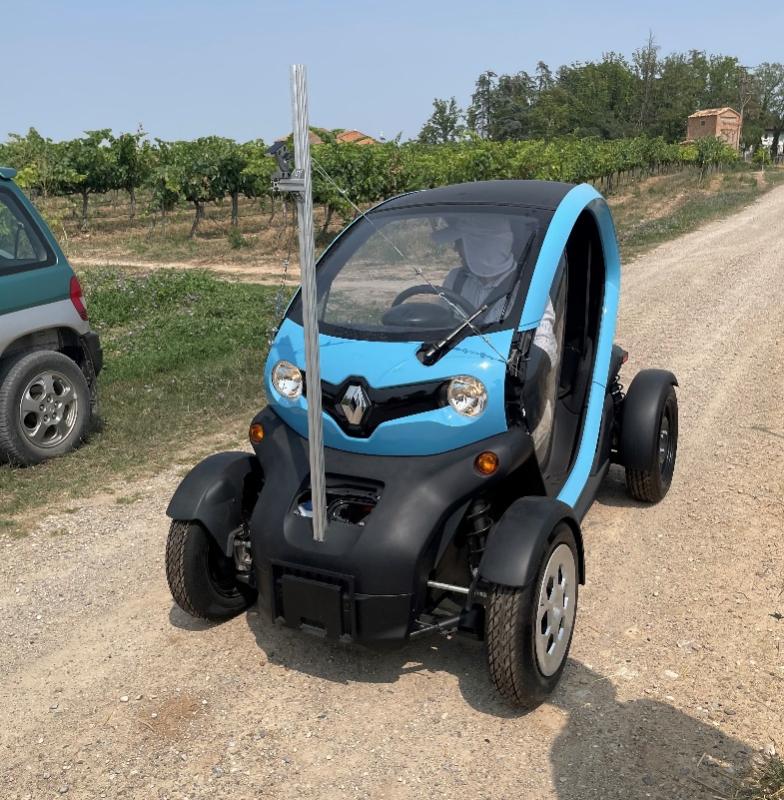
The second demonstration day, coinciding with the grape harvest, will show how a fleet of small robots (CSIC) dedicated to transport can collaborate with the grape harvesters (TERRAS), effectively alleviating the hard work they do.
In pilot 2, we have three use cases that will be demonstrated. The final demonstration details, the dates, and their number are not yet defined, but they will be in early September.The demonstrations will be silage harvesting, the Rumex weeding, and pest management. The silage harvesting will involve an autonomous tractor operating a windrower tool implement.
The tractor will carry out an autonomous mission on a silage field, where the grass has been cut with a mower. The tractor's mission will be created from the recorded path of the mower and the operation will be monitored by an autonomous drone following the tractor and transferring the real-time video and images to moving object detection AI service and situation awareness monitoring.
In the Rumex weeding use case, the weeding robot mission will include moving to the detected weed location, finding the weed root location, and the removal the plant with a robot arm and weeding tool. In pest management, the focus will be on precision spraying done by commercial spraying drones. Pilot 2 will also demonstrate the use of FlexiGroBots platform data space in exchanging the data needed and created by use case partners and the Mission Control Centre’s Fleet Manager application.
In pilot 2, we have three use cases that will be demonstrated. The final demonstration details, the dates, and their number are not yet defined, but they will be in early September. The demonstrations will be silage harvesting, the Rumex weeding, and pest management. The silage harvesting will involve an autonomous tractor operating a windrower tool implement. The tractor will carry out an autonomous mission on a silage field, where the grass has been cut with a mower. The tractor's mission will be created from the recorded path of the mower and the operation will be monitored by an autonomous drone following the tractor and transferring the real-time video and images to moving object detection AI service and situation awareness monitoring. In the Rumex weeding use case, the weeding robot mission will include moving to the detected weed location, finding the weed root location, and the removal the plant with a robot arm and weeding tool. In pest management, the focus will be on precision spraying done by commercial spraying drones. Pilot 2 will also demonstrate the use of FlexiGroBots platform data space in exchanging the data needed and created by use case partners and the Mission Control Centre’s Fleet Manager application.

Within the blueberry pilot, we will present 3 use-cases. Our robot Gari can do a lot of things, just by changing his “backpacks”. The first “backpack” is the soil sampling module which he uses to collect the soil samples and analyse the chemical and electrical properties of the soil. The second one is for scanning the blueberries, where he uses the BioSense’s Plant-o-Meter device to calculate a suite of vegetation indices and learn more about the plants. Last but not least, he will use the cameras to recognise weeds and target-spray them with a super-precise robotic arm. In these activities he will have the support from the sky, where drones will scan the fields and prepare the missions. The support will also come from the FlexiGroBots platform, which will analyse the images, locate blueberry rows, plan the missions and help the robot navigate through the field. All these activities will help farmers understand their crops, combat weeds and conduct the otherwise tedious job of soil analysis, and ultimately achieve a higher quality of fruit and better yields.
If you’d like to hear more about our demonstration activities, make sure you follow us on social media, where we will publish the latest news about the project and announce the exact time and date of the demonstrations.



